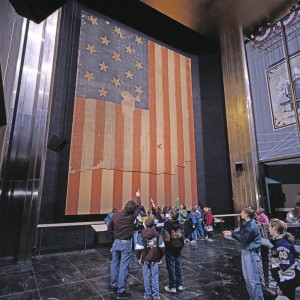Historians and History Museums
An Offsite Workshop at the Smithsonian’s National Museum of American History
Today’s guest post comes from Stephen Aron, UCLA and Autry National Center.
Those who braved the elements and made their way to the offsite sessions at the Smithsonian’s National Museum of American History came away with a fresh appreciation for the work of history museums and for the historians who work in them. 
The morning session featured the directors of several of the nation’s pre-eminent history museums, who spoke about the challenges they faced in building, renovating, and running institutions that are certainly not like your mother’s and father’s history museums. Not that long ago, as panelist Louise Mirrer (New-York Historical Society) observed, many history museums were conceived like banks or private clubs. They existed to collect and preserve with little concern for how collections might be exhibited or interpreted.
But Mirrer, like her fellow directors, has set out to remake the look, the feel, and the purpose of history museums by making public access and engagement the animating principle. As John Gray (National Museum of American History) put it, a visit to a history museum should be a “life-changing experience.” Both Gray and Mirrer have overseen extensive (and expensive) physical renovations to their museums, while Lonnie Bunch (National Museum of African American History and Culture) is shepherding the construction of a new facility on the Mall. Yet, all the directors agreed that history museums aren’t like fields of dreams; just because you build it, doesn’t mean people will come. Adapting a public orientation is essential, but so, argued Bunch, is embracing controversy and accepting ambiguity.
That formulation worked well for Kevin Gover (National Museum of the American Indian), who noted that his museum was now preparing exhibitions that made histories more central than they had been in the initial round of installations at NMAI. Joan Marshall (Bullock Texas State History Museum), however, raised some doubts about the embrace of controversy and ambiguity. She also maintained that engaging the public requires listening to the public, but the historians who have worked inside and alongside her museum have not always proven good listeners.
The afternoon session turned the stage over to historians working in a variety of roles in history museums. Panelists addressed the expected and unexpected paths that brought them to their positions, and the ways in which their horizons shifted and widened when they took up careers in museums (which one audience member described as going from working in “black and white to color”). The conversation also focused on how PhD programs had prepared—and failed to prepare—panelists for their museum careers. Here, particular attention was paid to the contrast between the atomized nature of most academic training and the collaborative imperative in museums. A truly malleable PhD, contended Erik Greenberg (Autry National Center), should mandate that all students take at least one course in which they work on a single project and receive a single grade.
For more on the panels, see my article in an upcoming issue of the AHA’s Perspectives on History, and check the AHA website for information about viewing the sessions on C-SPAN, which taped them for later broadcasting and web posting.
Stephen Aron, UCLA and Autry National Center.
This post first appeared on AHA Today.
Tags: AHA Today 2014 Annual Meeting Museums
Comment
Please read our commenting and letters policy before submitting.






